Time-Limited Aging Analysis of the Containment of Nuclear Power Plants without Monitoring Tendons
Abstract
:1. Introduction
2. License Renewal Regulations and In-Service Monitoring Requirements for Prestressed Steel Tendons
2.1. Regulatory Standards for NPP License Renewal
2.2. Monitoring Requirements for Time-Limited Aging Analysis of Prestressed Systems
3. Design and Loss Calculation of Prestressing System of a Nuclear Power Plant
3.1. Project Overview
3.2. Internal Force Analysis of Containment under Internal Pressure
3.3. Theoretical Calculation of Prestress Loss
4. Numerical Model of Prestress and Determination of Minimum Required Value
4.1. Structural Model of Prestressed System
4.2. Response of Containment Structure under Peak Internal Pressure
- (1)
- Radial deformation
- (2)
- Strain analysis
- (3)
- Overall test verification
4.3. Calculation of Minimum Required Value of Prestress
5. Conclusions and Recommendations
Author Contributions
Funding
Data Availability Statement
Conflicts of Interest
References
- Yi, P.; Wang, Q.K.; Kong, X.J. Aseismic safty analysis of a prestressed concrete containment vessel for CPR1000 nuclear power plant. Earthq. Eng. Eng. Vib. 2017, 16, 55–67. [Google Scholar] [CrossRef]
- Chakraborty, M.K.; Acharya, S.; Pisharady, A.S. Assessment of ultimate load capacity of concrete containment structures against structural collapse. Nucl. Eng. Des. 2017, 323, 417–426. [Google Scholar] [CrossRef]
- Liang, Y.P.; Feng, D.C.; Ren, X.D. High-fdelity numerical analysis of the damage and failure mechanisms of a prestressed concrete containment vessel under internal pressure. Nucl. Eng. Des. 2021, 383, 111439. [Google Scholar] [CrossRef]
- Wang, J.; Yang, L. Method discussion of concrete containment buildings longevity assessment in NPP. Ind. Constr. 2015, 45, 182–191. (In Chinese) [Google Scholar]
- Feng, P.; Chai, G.; Li, L. Preliminary Study on Response Law of Prestressed Concrete Containment Vessel after LOCA in Certain NPP. At. Energy Sci. Technol. 2015, 49, 1815–1820. (In Chinese) [Google Scholar]
- Yang, L.; Wang, Y.; Lin, S. Assessment and management of aging concrete containment buildings for nuclear power plants. Ind. Constr. 2009, 39, 1094–1098. (In Chinese) [Google Scholar]
- NUREG-1800; Standard Review Plan for Revise of License Renewal Applications for Nuclear Power Plants. Nuclear Regulatory Commission: Rockville, MD, USA, 2010.
- ASME. Boiler and Pressure Vessel Code: Section III: Devision 2: Code for Concrete Containment; ASME: New York, NY, USA, 2004. [Google Scholar]
- NUREG-1801; Generic Aging Lessons Learned (GALL) Report. Nuclear Regulatory Commission: Rockville, MD, USA, 2010.
- Nuclear Regulatory Commission. Regulatory Guide 1.90 Inservice Inspection of Prestressed Concrete Containment Structures with Grouted Tendons, Revision 2; Nuclear Regulatory Commission: Rockville, MD, USA, 2012.
- NB/T20017-2010; Containment Structural Integrity Test of Pressurized Water Reactor Nuclear Power Plant. National Energy Board: Beijing, China, 2010.
- Sun, F.; Pan, R.; Wang, L.; Mao, H.; Yang, Y. Study on effective prestressing effects on concrete containment under the design-basis pressure condition. Nucl. Saf. 2013, 12, 20–25. (In Chinese) [Google Scholar]
- Sun, F.; Y, T.; Fu, Q. Discussion on Duration of Maximal Pressure Plateau in Containment Structure Integrity Test. At. Energy Sci. Technol. 2016, 50, 1846–1852. (In Chinese) [Google Scholar]
- GB 50010-2010; Specification for Design of Concrete Structures. China Construction Industry Press: Beijing, China, 2011.
- NB/T20303-2014; Specification for Design of Prestressed Concrete Containment of Pressurized Water Reactor Nuclear Power Plant. National Energy Board: Beijing, China, 2014.
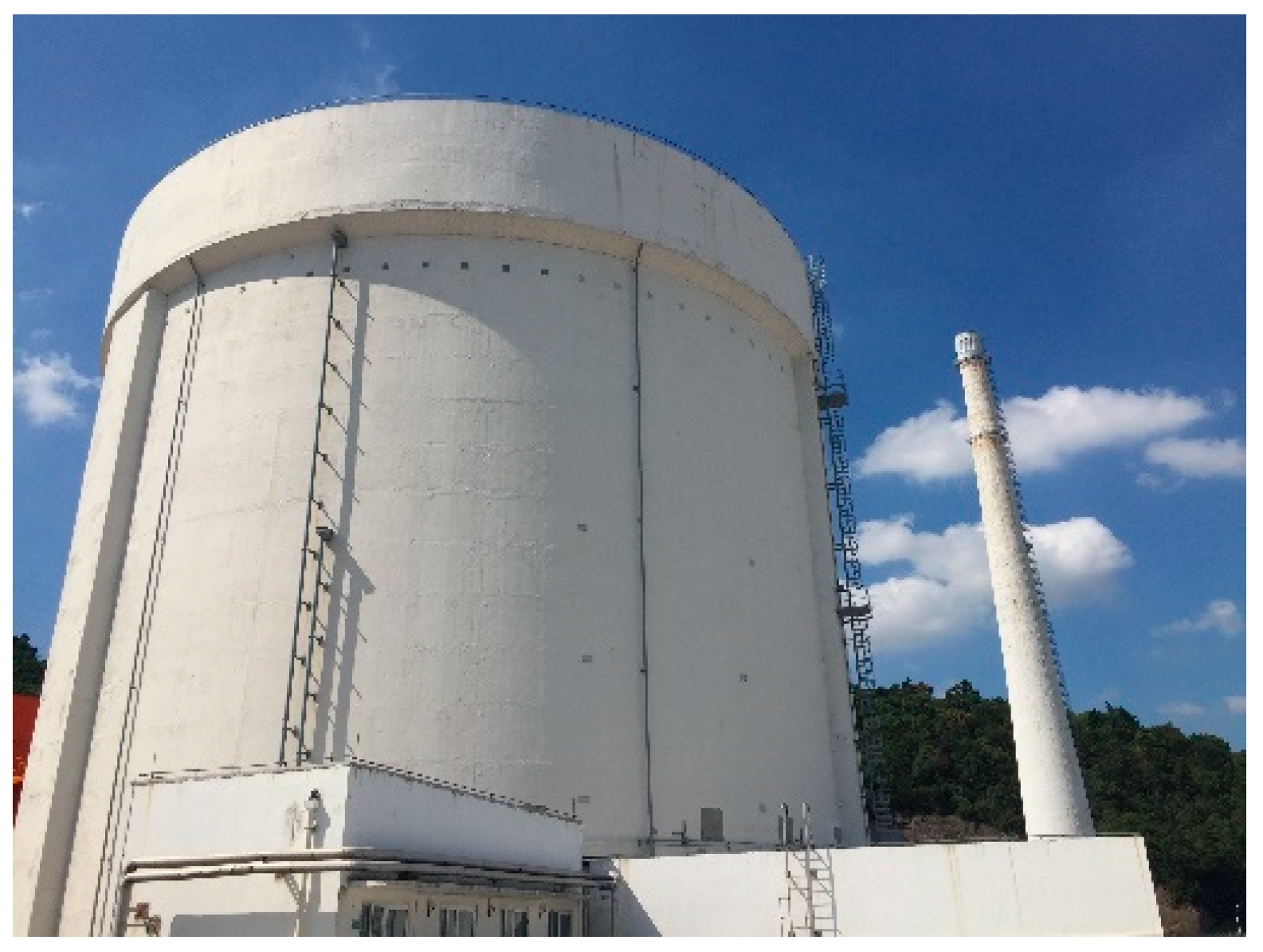
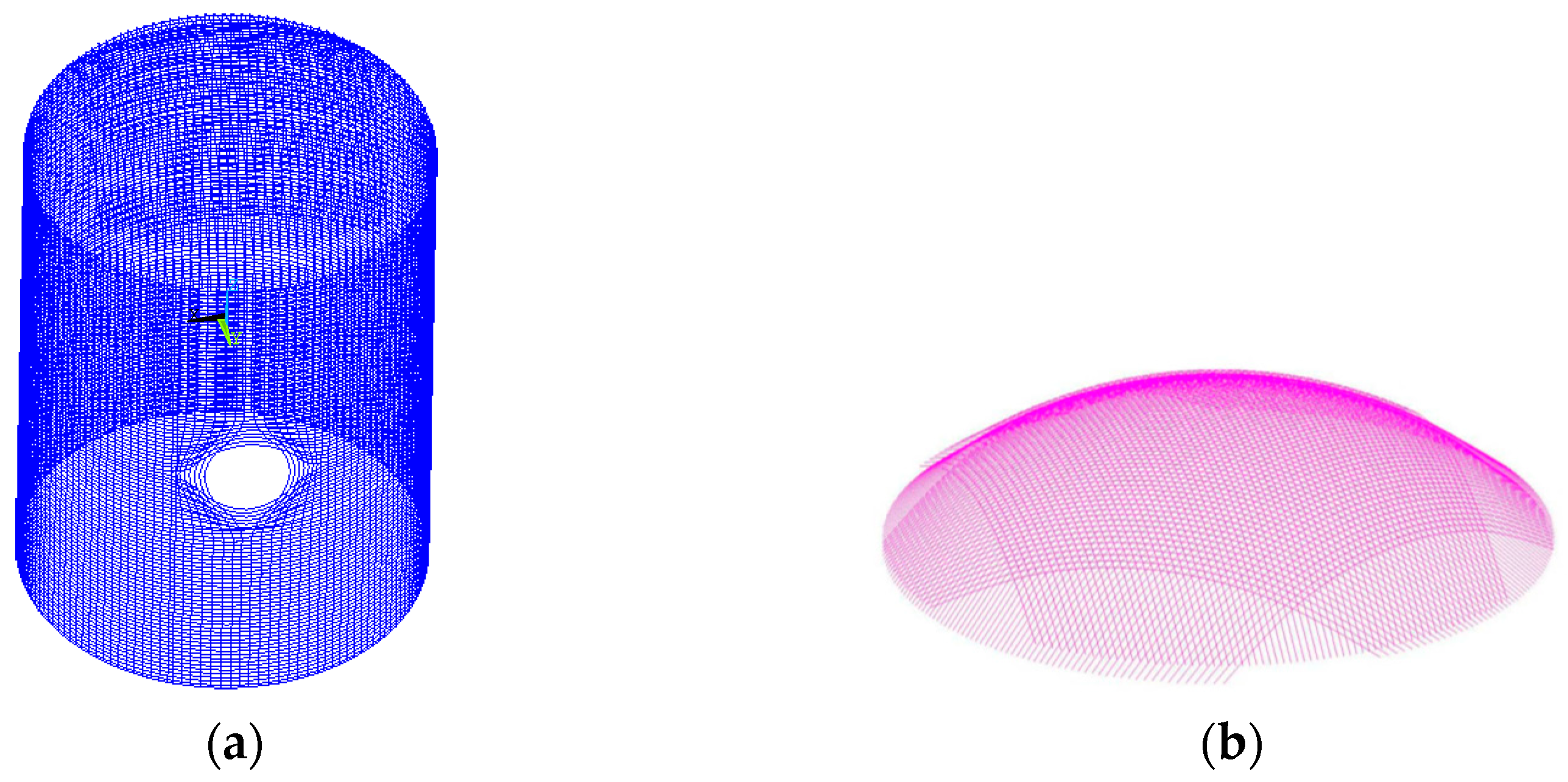
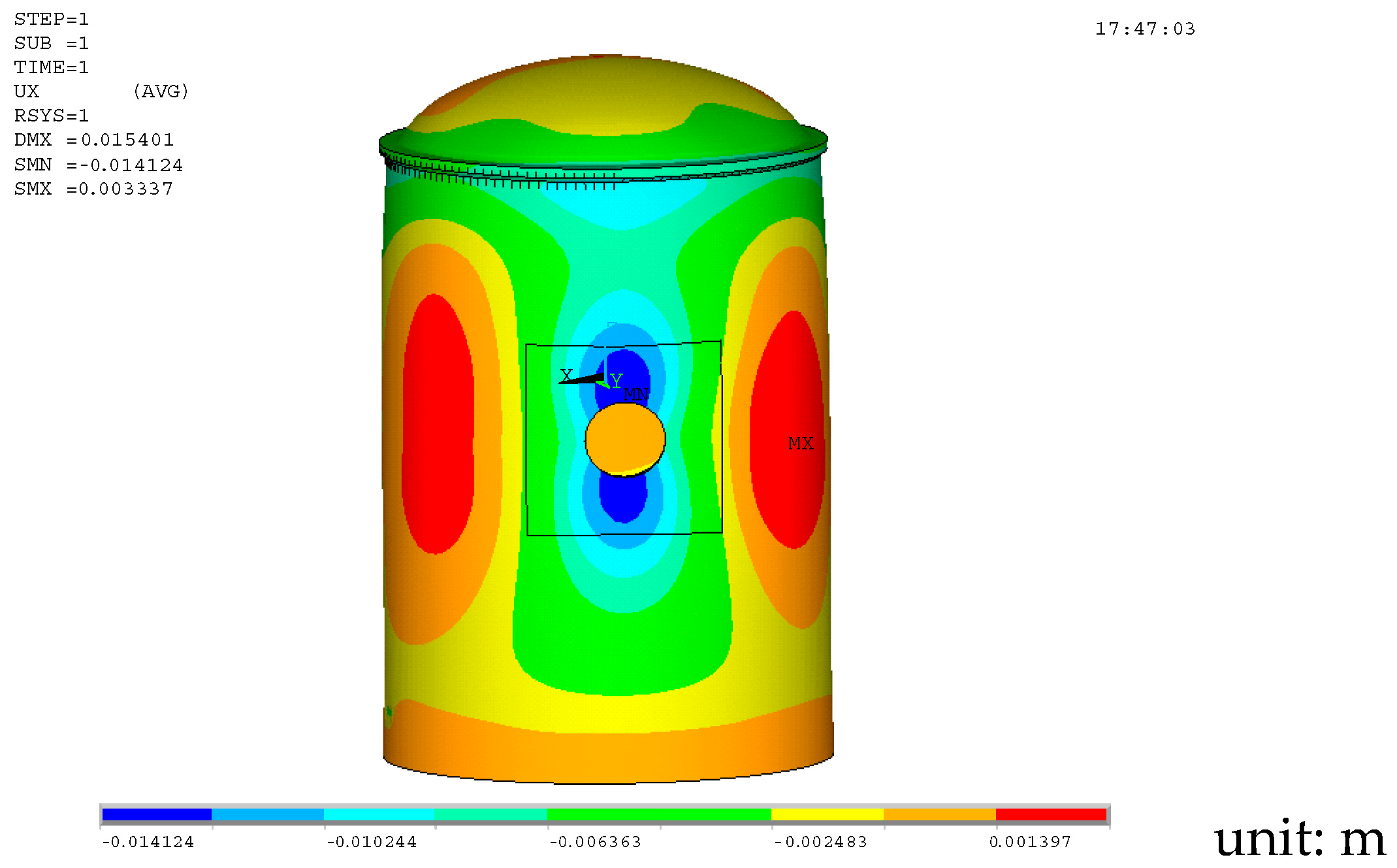
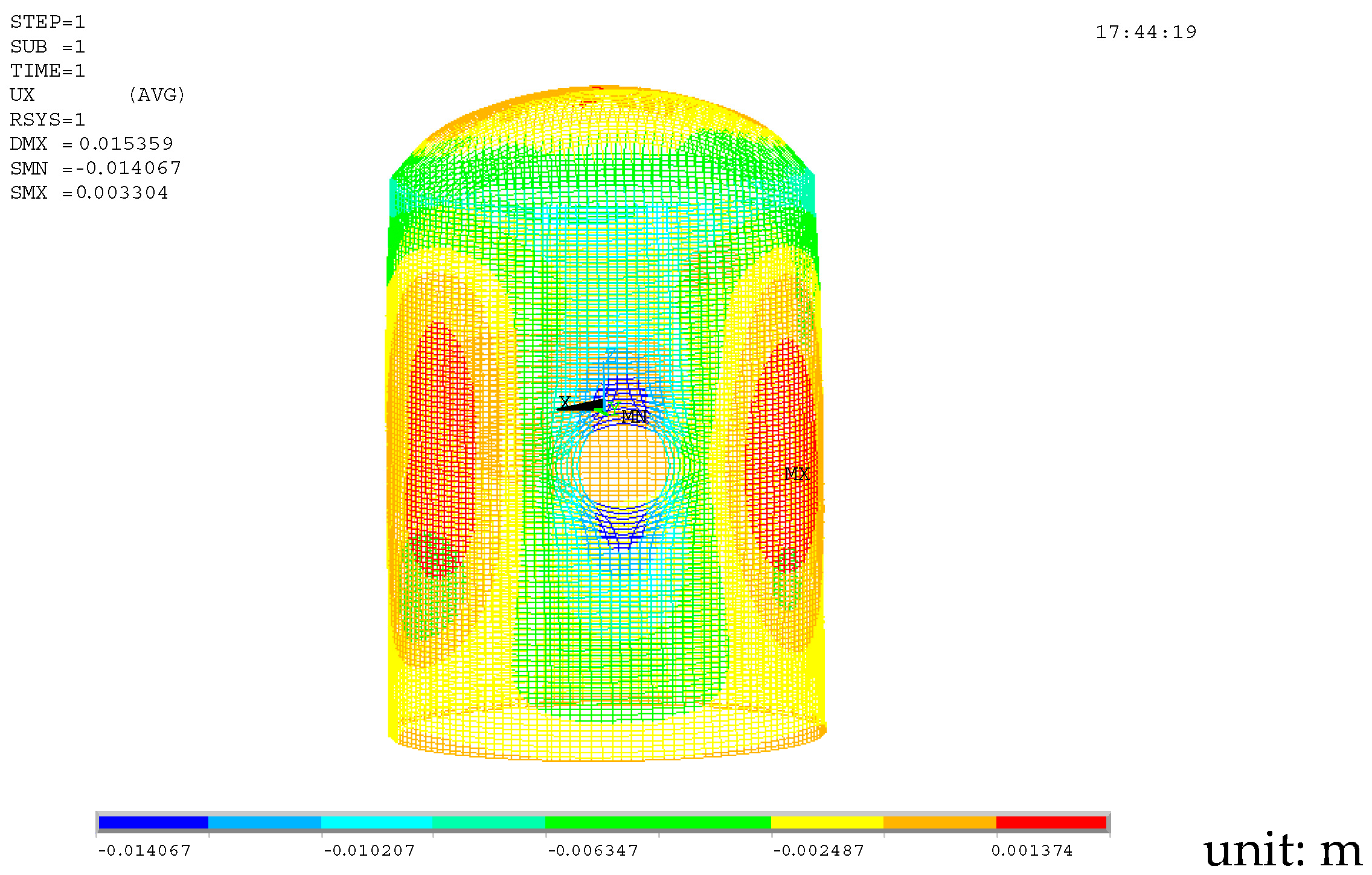
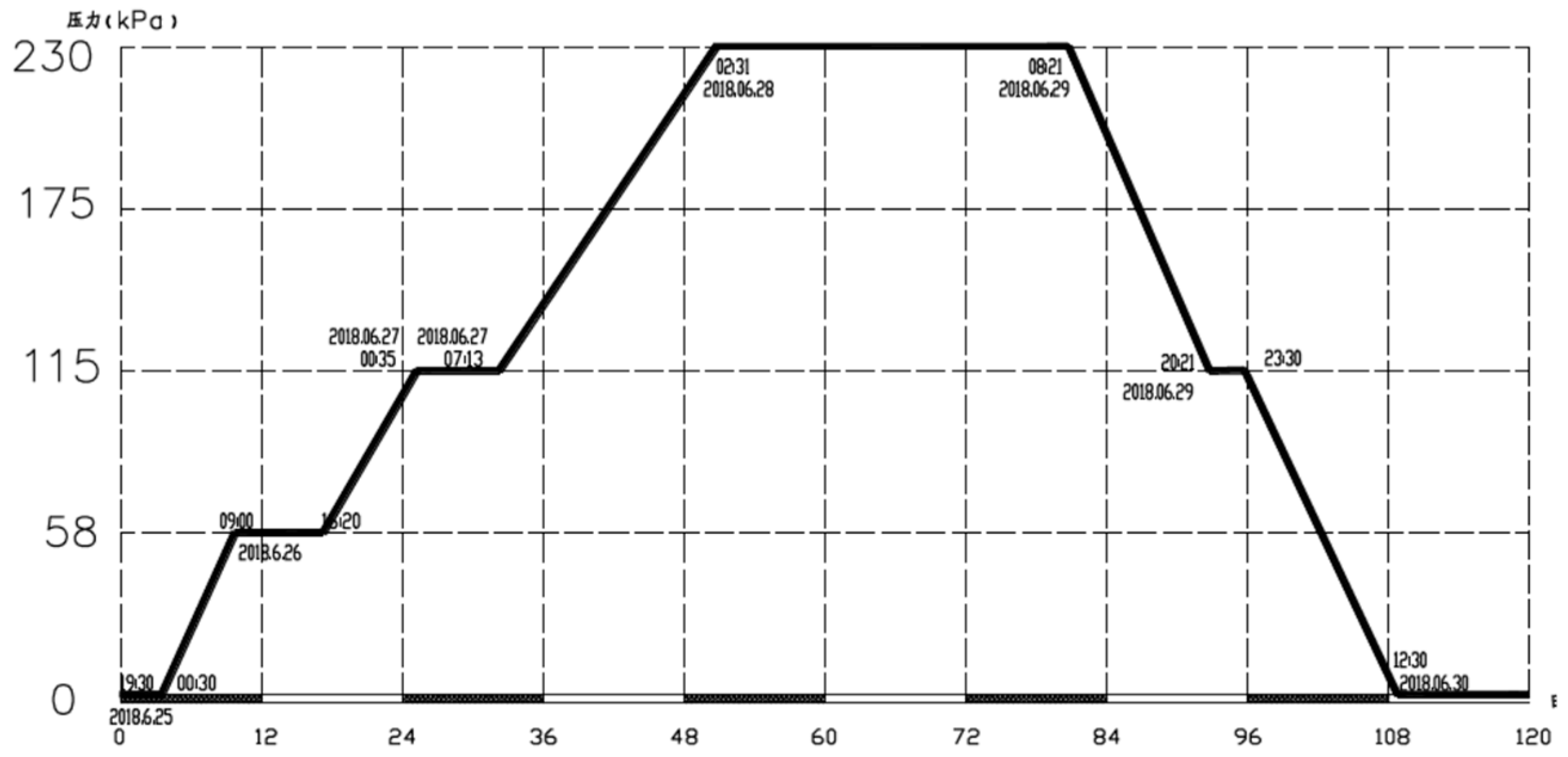
Disclaimer/Publisher’s Note: The statements, opinions and data contained in all publications are solely those of the individual author(s) and contributor(s) and not of MDPI and/or the editor(s). MDPI and/or the editor(s) disclaim responsibility for any injury to people or property resulting from any ideas, methods, instructions or products referred to in the content. |
© 2024 by the authors. Licensee MDPI, Basel, Switzerland. This article is an open access article distributed under the terms and conditions of the Creative Commons Attribution (CC BY) license (https://creativecommons.org/licenses/by/4.0/).
Share and Cite
Sun, F.; Ren, G. Time-Limited Aging Analysis of the Containment of Nuclear Power Plants without Monitoring Tendons. Energies 2024, 17, 3325. https://doi.org/10.3390/en17133325
Sun F, Ren G. Time-Limited Aging Analysis of the Containment of Nuclear Power Plants without Monitoring Tendons. Energies. 2024; 17(13):3325. https://doi.org/10.3390/en17133325
Chicago/Turabian StyleSun, Feng, and Guopeng Ren. 2024. "Time-Limited Aging Analysis of the Containment of Nuclear Power Plants without Monitoring Tendons" Energies 17, no. 13: 3325. https://doi.org/10.3390/en17133325



